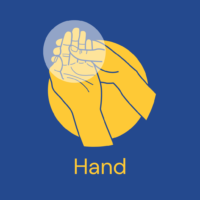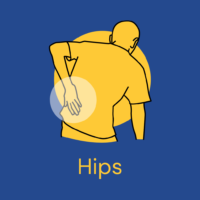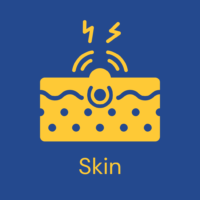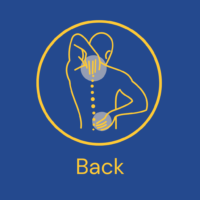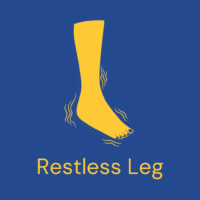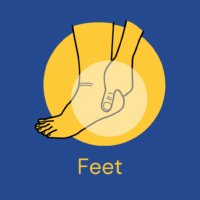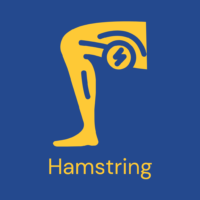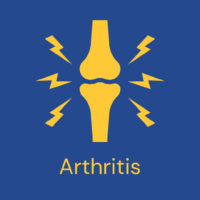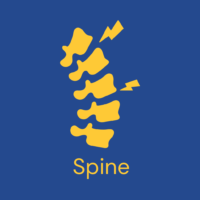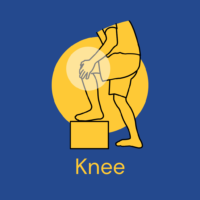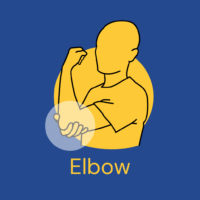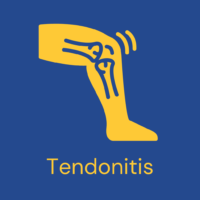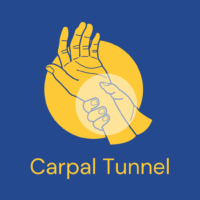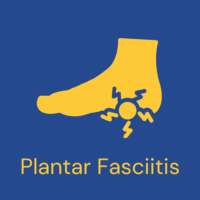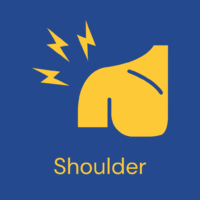What Is ShockWave Therapy?
SoftWave Therapy Lincoln specializes in ShockWave Therapy, also referred to as Extracorporeal Shockwave Therapy (ESWT), an advanced non-invasive medical treatment. This therapy employs high-energy sound waves to effectively address a variety of musculoskeletal conditions, particularly those affecting connective tissues like ligaments and tendons. By delivering these targeted sound waves to the affected area, ShockWave Therapy stimulates the body’s natural healing processes, enhancing circulation, reducing pain, and promoting tissue repair. This treatment option attracts many seeking faster recovery and relief without resorting to surgery or prolonged medication use.

What Are The Benefits of Shockwave Therapy?
The benefits of ShockWave Therapy are numerous:
- Natural Healing Promotion: By stimulating increased blood circulation and cellular repair activity, ShockWave Therapy accelerates the body’s natural healing process, facilitating rapid tissue repair.
- Non-Invasive: Notably, ShockWave Therapy is non-surgical, eliminating the risks and extended recovery periods typically associated with invasive procedures.
- Pain Reduction: Through its therapeutic process, ShockWave Therapy effectively alleviates pain associated with various conditions, offering a non-pharmaceutical alternative for pain management.
- Mobility Improvement: Many individuals experience improved mobility post-therapy as ShockWave Therapy addresses the root causes of pain and stimulates tissue repair, enabling increased comfort and freedom of movement.
- Cost-Effectiveness: Compared to long-term medication or surgery, ShockWave Therapy can be a more economical option for some patients, though individual medical needs and insurance coverage may vary.
- Limited Side Effects: ShockWave Therapy typically entails fewer side effects compared to surgical interventions or prolonged medication usage, enhancing its safety profile.
SoftWave™ technology, utilized by SoftWave™ Therapy Lincoln, treats a wide array of physical injuries and conditions. This innovative technology harnesses broad-reaching shockwaves to address diabetic foot ulcers, tendon diseases, musculoskeletal pains, and facilitate wound and fracture healing.
What is Shockwave Therapy Used For?
ShockWave Therapy is commonly used to treat various musculoskeletal and soft tissue conditions such as:
- Foot Conditions: Plantar Fasciitis and Heel Spurs
- Tendinopathies: Including Achilles, Tennis Elbow, and Jumpers Knee
- Bone Issues: Stress Fractures and Delayed Bone Healing
- Calcific Conditions: Calcific Tendonitis and Shoulder Impingement
- Inflammation & Pain: Chronic inflammation
- Tissue Concerns: Scar tissue breakdown and non-healing ulcers.
Where Do You Find Shockwave Therapy?
ShockWave Therapy is typically administered by trained medical professionals at specialized medical centers, clinics, and physiotherapy facilities equipped with professional-grade machines. Additionally, at-home shockwave therapy devices are available, though differences in effectiveness and settings compared to medical settings should be noted.
What Does SoftWave™ Treat?
SoftWave™ can treat an array of physical injuries and conditions.
Where Does Shockwave Therapy Come From?
Shockwave therapy, which harnesses the power of natural shockwaves, has revolutionized non-invasive medical treatments. Its evolution from natural phenomena to a staple in modern healthcare highlights a remarkable journey of innovation and promise.
Shockwaves in nature
Shockwaves are large amplitude waves generated by sudden and intense disturbances in a medium. These powerful, fast-moving surges of energy are capable of traveling through air, liquid, or solid materials.
Definition of a Shockwave
A shockwave is a potent burst of energy that moves through a medium. It is characterized by a rapid increase in pressure, speed, and intensity, followed by a gradual decrease in pressure.
Natural Occurrences
Shockwaves naturally occur during various high-energy events such as explosions, supersonic jets, earthquakes, and volcanic eruptions. They are also observed during the explosive impact of meteorites, which displace air or water, creating waves that travel at high velocities.
Shockwaves in medicine
The application of shockwaves in medicine began with the treatment of kidney stones in the 1980s. This technique, known as Extracorporeal Shock Wave Lithotripsy (ESWL), used shockwaves to non-invasively break down kidney stones. Building on this success, medical professionals extended the use of shockwaves to orthopedics and physiotherapy.
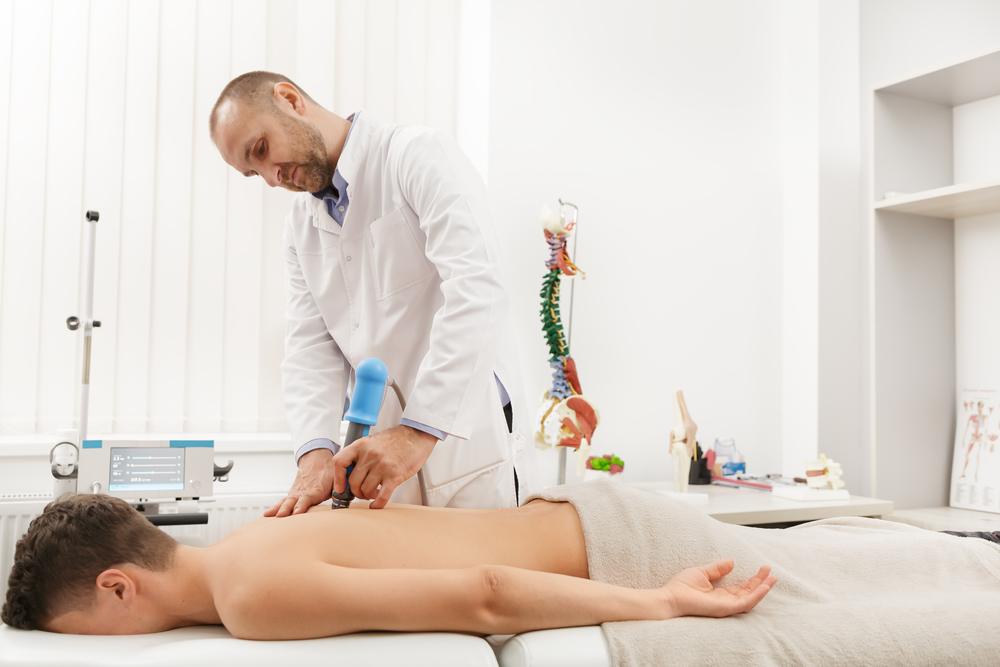
Types of Shockwave Therapy
Origins and Types of Shockwave Therapy
Shockwave therapy, rooted in the study of nature’s powerful forces, has diversified into various forms to address specific medical needs. Each type of shockwave therapy offers targeted solutions for different conditions, with effectiveness derived from unique propagation characteristics and mechanisms.
Focused Shockwaves
Focused shockwaves are precisely directed waves targeting specific areas within the body. These waves are generated outside the body and focused on a particular internal point, allowing medical professionals to treat deeper-seated issues without invasive procedures. Focused shockwaves are commonly used to manage conditions such as chronic tendinitis, calcific shoulder tendinitis, and some cardiovascular diseases.
Radial Shockwaves
Radial shockwaves, or radial pressure waves, are created using a pneumatic mechanism. A projectile is accelerated within a handpiece to strike a transmitter, producing waves that spread out from their point of origin. Unlike focused shockwaves, radial waves disseminate energy more broadly, making their impact less concentrated. They are effective for treating conditions near the skin’s surface, including plantar fasciitis, tennis elbow, and other superficial musculoskeletal issues.
Unfocused Shockwaves
Unfocused shockwaves disperse energy across a wider and deeper area of tissue. These are typically produced through electrohydraulic methods, where an electrical discharge generates a spark underwater, resulting in a shockwave. Unfocused shockwaves are suitable for conditions that benefit from a more generalized therapeutic approach. SoftWave™ therapy is the leading technology in unfocused shockwave treatment, addressing conditions such as diabetic foot ulcers, tendon diseases, musculoskeletal pain, and aiding in wound and fracture healing.
High vs. Low Energy Shockwaves
High Energy Shockwaves: High energy shockwaves deliver a powerful dose of energy, typically in a single session. They are primarily used for certain orthopedic conditions.
Low Energy Shockwaves: Low energy shockwaves provide a gentler approach and are often administered over multiple sessions. They are commonly used for conditions like tendonitis or calcifications.
Mechanisms of Generating Shockwaves
The therapeutic efficacy of shockwaves arises from various generation mechanisms, each with its distinct benefits:
- Electromagnetic Shockwave: Created by passing an electrical current through a coil to generate a magnetic field. Devices such as the Storz Duolith utilize this method.
- Piezoelectric Shockwave: Produced by crystals that generate shockwaves when exposed to an electric current. The PiezoWave device exemplifies this technology.
- Electrohydraulic: Involves an electric spark submerged in a liquid medium to create a shockwave. The MODULITH SLK employs this mechanism.
- Radial Waves: A more indirect method where a projectile is accelerated inside a handpiece, striking a transmitter. Devices like the Swiss DolorClast use this approach.
SoftWave Therapy Lincoln employs these advanced shockwave technologies to provide effective and tailored treatment solutions for various musculoskeletal and soft tissue conditions.
Live Pain Free Again with SoftWave™
90% patient satisfaction rate and 94% quality satisfaction rate amongst medical specialists
Softwave™ can increase your blood supply, boost collagen production, break up calcification and more
65-91% improvement in musculoskeletal and general pain complaints from SoftWave™ Therapy
Softwave™ therapy is non-invasive, drug-free, and FDA-cleared
How Softwave™ Therapy Works

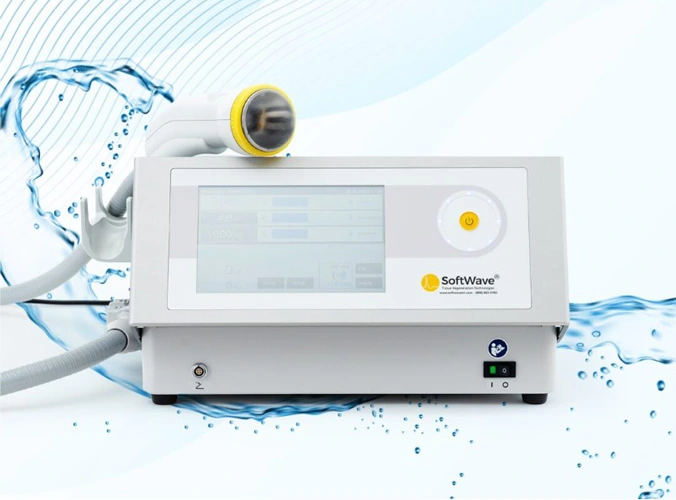
Who is Softwave™ Therapy For?
If you’re experiencing chronic pain, or loss of mobility in your shoulder, elbow or back, SOFTWAVE™ is for you!
Pain and discomfort doesn’t discriminate and neither does pain treatment! This is a non invasive, non surgical, non-medication solution to healing your body. It’s great for treating many areas, but we have seen lots of shoulders recently, from both younger patients and more elderly patients.
SoftWave FAQs
What is SoftWave™ Therapy?
SoftWave™ Therapy is a revolutionary non-invasive treatment method utilizing patented technology to facilitate healing at the cellular level, enhance blood circulation, and kickstart the body’s innate healing mechanisms. This therapy employs a proprietary device known as the OrthoGold, engineered by Tissue Regeneration Technologies, and is accessible at licensed medical facilities across the United States. The FDA(510k) clearance underscores its safety and efficacy. During SoftWave™ sessions, potent, unfocused shock waves are directed to targeted areas of the body afflicted by injury, scarring, or inflammation. Each treatment typically lasts between 10 to 15 minutes, and notably, it necessitates neither anesthesia nor numbing agents, with no recovery period required afterward.
What conditions and injuries are treated by SoftWave™ Therapy?
SoftWave™ Therapy effectively addresses a diverse range of conditions, injuries, and symptoms, including:
- Joint and muscle pain, such as knee, shoulder, and lower back pain.
- Overuse injuries, including plantar fasciitis, Achilles tendinitis, and jumper’s knee.
- Orthopedic conditions like carpal tunnel syndrome, meniscus tears, and soft tissue injuries.
- Ulcers, wounds, and burns.
- Neuropathies.
- Post-surgical healing.
As ongoing research and clinical trials continue to unfold, the potential applications of SoftWave™ Therapy expand, offering hope and relief to individuals grappling with various health challenges. Explore the complete list of conditions treated by SoftWave™ Therapy for comprehensive insights into its remarkable versatility and efficacy.
Where can I go to get SoftWave™ Therapy?
You can access SoftWave™ Therapy at various healthcare facilities across the United States, including doctors’ offices, chiropractic and physical therapy clinics, as well as medical centers. To locate a licensed clinician offering SoftWave™ Therapy near you and to take advantage of this innovative treatment, click here to claim your voucher.
What are the medical benefits of SoftWave™ therapy?
The medical benefits of SoftWave™ therapy are extensive and include:
- Improvement in blood supply to the treated area.
- Modulation of inflammation, reducing its severity.
- Reduction in both acute and chronic pain levels.
- Stimulation, activation, and recruitment of resident cells to aid in the healing process.
- Repair, remodeling, and regeneration of damaged tissue.
- Acceleration of wound healing processes.
- Induction of an antibacterial effect, aiding in the prevention or treatment of bacterial infections.
What is the SoftWave™ treatment process like?
SoftWave™ therapy is indeed a swift and convenient non-invasive procedure, typically lasting between 10 to 15 minutes, and it doesn’t necessitate any recovery downtime. During the treatment, ultrasound gel is applied to the targeted area, followed by the gentle placement of the SoftWave device, which administers shock waves to the affected region. While most patients report feeling a gentle tapping or pulsing sensation, some may experience mild discomfort or pain. However, the use of anesthesia or numbing agents is unnecessary. Effective communication with the provider during the session can aid in identifying treatment areas and monitoring progress effectively.
Is SoftWave™ painful?
SoftWave therapy stands out as a non-invasive and non-surgical treatment option. Sensations experienced during the therapy may vary among patients, with some feeling only a mild tapping or pulsing sensation on the skin, while others may experience slight pain or discomfort in the treated area. Specialists have the flexibility to adjust the intensity of the treatment if discomfort becomes significant. It’s worth noting that the level of discomfort can be influenced by the patient’s existing pain levels. However, despite these potential sensations, most patients find the discomfort tolerable throughout the brief duration of the treatment, typically lasting just 10-15 minutes on average.
What results should I expect from SoftWave™ Therapy?
SoftWave™ Therapy offers both immediate and lasting relief for eligible candidates. Following a single session, patients commonly report a reduction in pain ranging from 20-50% and an enhancement in mobility, with the effects lasting from several hours to several days. While some individuals may notice improvement after just one session, others may require multiple treatments to experience significant benefits.
Unlike conventional pain medications and injections that primarily address symptoms, SoftWave™ Therapy aims to activate the body’s natural healing mechanisms at the cellular level. By stimulating these innate processes, SoftWave™ facilitates genuine and enduring results, providing a non-invasive alternative for managing pain and promoting recovery.
Does SoftWave™ really work?
SoftWave therapy boasts a clinically proven success rate ranging from 60% to 91% for addressing musculoskeletal and general pain complaints. This patented and FDA-cleared technology has gained the trust of esteemed medical institutions such as the Cleveland Clinic and Memorial Sloan Kettering, along with professional sports teams like the Chicago Cubs and Pittsburgh Steelers.
Continued clinical research is exploring additional applications for this potent technology, underscoring its versatility and efficacy in addressing a wide range of medical conditions and injuries.
Is SoftWave™ FDA cleared?
SoftWave™ therapy has earned FDA(510k) clearance for multiple indications, including enhancing blood supply, activating connective tissue, providing temporary pain relief, managing chronic diabetic foot ulcers, and addressing acute second-degree burns.
Furthermore, SoftWave™ is patented and backed by clinical evidence, boasting a success rate ranging from 60% to 91% for treating various musculoskeletal and general pain complaints. This therapy is relied upon by prestigious medical institutions like the Cleveland Clinic, Shepherd’s Center, and Memorial Sloan Kettering, as well as esteemed professional sports teams such as the Chicago Cubs and Pittsburgh Steelers.
What makes SoftWave™ therapy a more effective shock wave treatment?
SoftWave represents a significant leap forward in shock wave technology, revolutionizing tissue healing and regeneration across various healthcare fields including orthopedics, traumatology, wound care, aesthetics, and urology.
Unlike traditional shock wave therapies, SoftWave utilizes patented low-intensity unfocused shock waves that can penetrate a wider and deeper area of tissue (7cm x 12cm). In contrast, focused shock waves (1cm x 12cm) and radial waves (2cm x 2cm) are not true shock waves. This distinction makes SoftWave the sole genuine unfocused shock wave treatment currently available. By delivering powerful shock waves without causing microtrauma, SoftWave effectively triggers the body’s natural healing processes.
How many SoftWave™ treatment sessions are needed?
If deemed suitable for treatment, your SoftWave provider will likely propose a treatment plan consisting of 6 to 12 sessions. The exact number of sessions required will hinge on the nature of your injuries and how your body responds to therapy. Additionally, your plan may encompass supplementary recommendations to bolster the healing process, such as specific stretches or dietary adjustments.
Is SoftWave™ therapy safe?
SoftWave stands as a patented and FDA-cleared therapy, leveraging the body’s innate healing mechanisms. It offers a safe, non-invasive, and medication-free approach to addressing various conditions such as chronic pain, inflammation, orthopedic issues, and musculoskeletal injuries.
Administered at licensed medical facilities, including doctors’ offices and chiropractic clinics, SoftWave sessions typically last 10-15 minutes and entail no need for anesthesia or numbing agents. Moreover, patients usually do not require downtime for recovery post-treatment.
Esteemed medical institutions like Cleveland Clinic, Shepherd’s Center, and Memorial Sloan Kettering have placed their trust in SoftWave, attesting to its efficacy and safety. During your initial appointment as a new patient, your SoftWave provider will be available to address any medical concerns or conditions that might influence your eligibility for treatment.
Does SoftWave™ Therapy have side effects?
SoftWave™ Therapy boasts minimal and non-restrictive side effects. Unlike some treatments, it doesn’t result in bruising or swelling. However, a few patients might encounter mild redness and soreness, typically dissipating within one to two days post-treatment. While recovery downtime isn’t typically necessary, it’s advisable to refrain from high-impact movements or exercise during the initial 24-48 hours after the session.
Does combining SoftWave™ with other treatments lead to better results?
Absolutely, SoftWave therapy stands as a potent standalone treatment for numerous musculoskeletal conditions. However, in certain scenarios, combining it with other therapies like physical therapy, chiropractic care, massage, and soft tissue mobilization can not only expedite the healing process but also enhance overall outcomes. This collaborative approach ensures a more comprehensive and tailored treatment plan to address specific patient needs and optimize results.
Ready To Try A Discovery Session?
You can try a Softwave™ treatment for just $49. We have seen amazing results here at Heiss Chiropractic & Acupuncture after just the first session, but even better results after the first couple of treatments. After 14 years in business, Dr. Heiss is so excited to bring this new treatment to his practice as a way to finally help people that wouldn’t get the full benefits of Chiropractic care, and are experiencing chronic pain or facing surgery and don’t want to resort to medication that just masks pain, and surgery which has it’s own pain and causes further risk and downtime.

